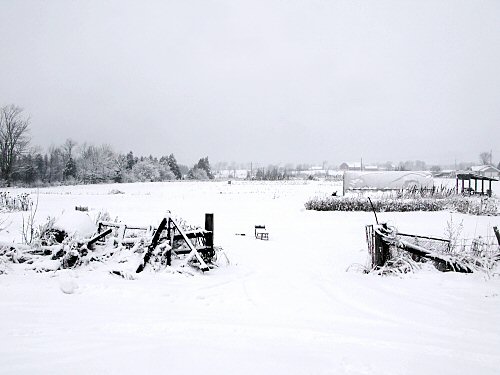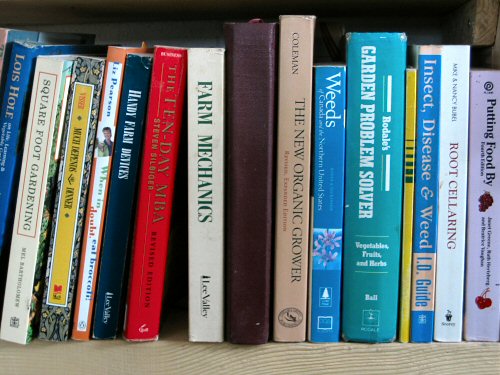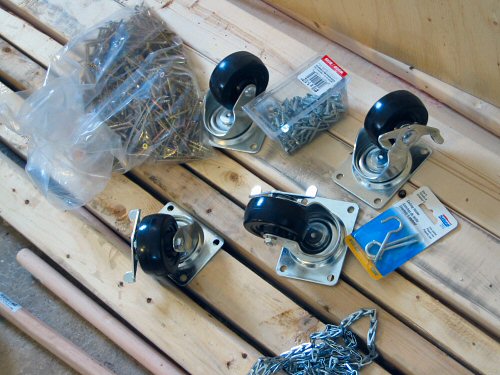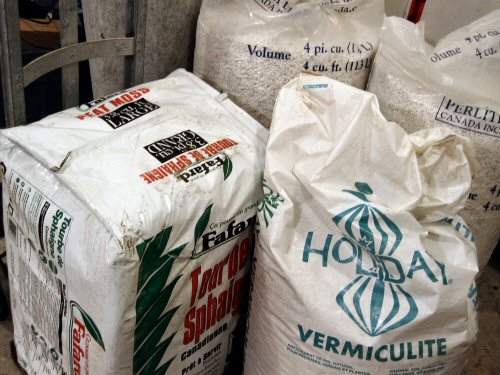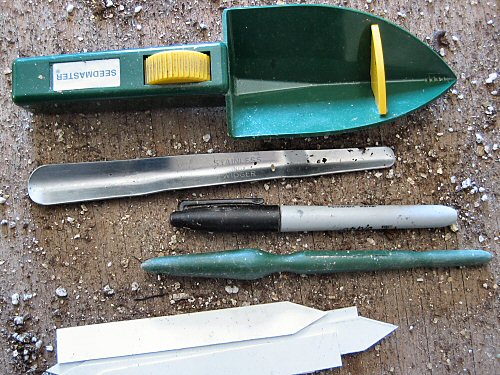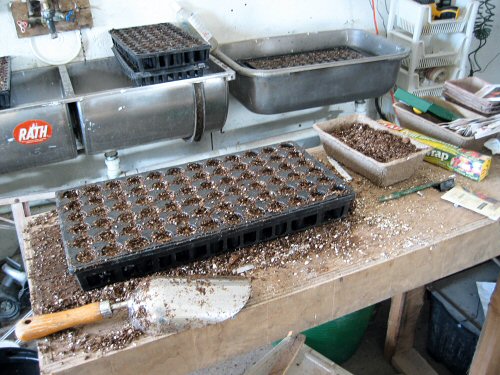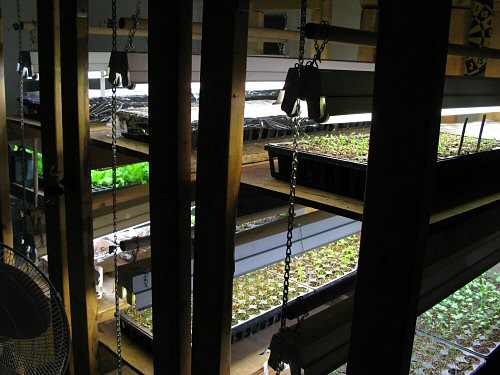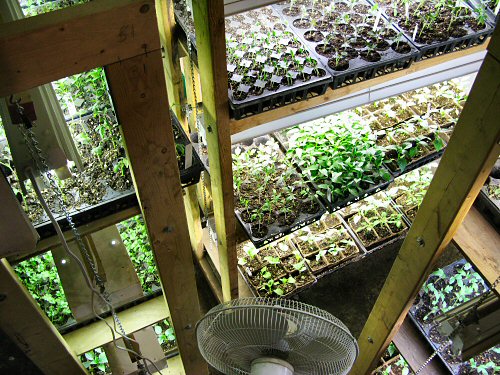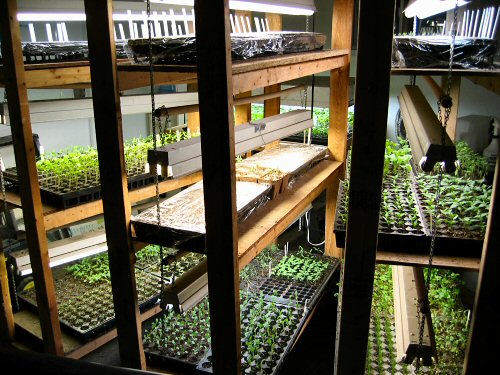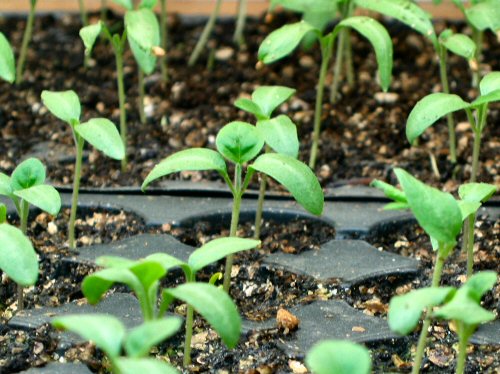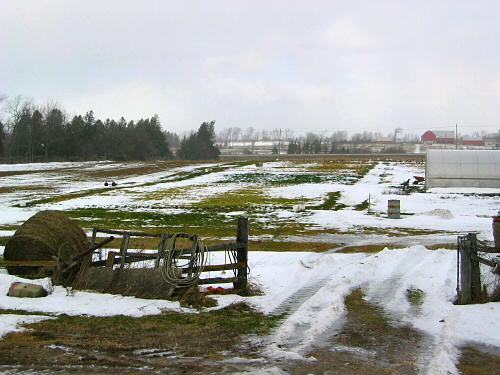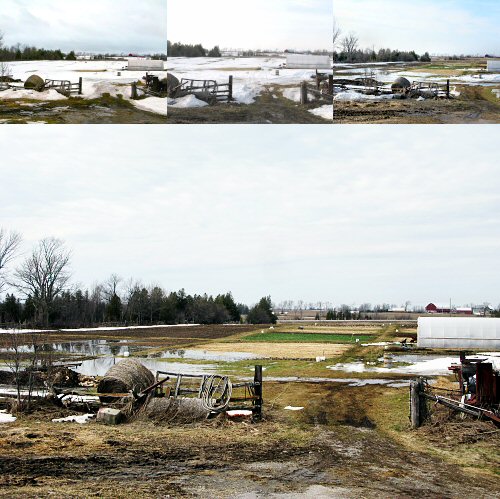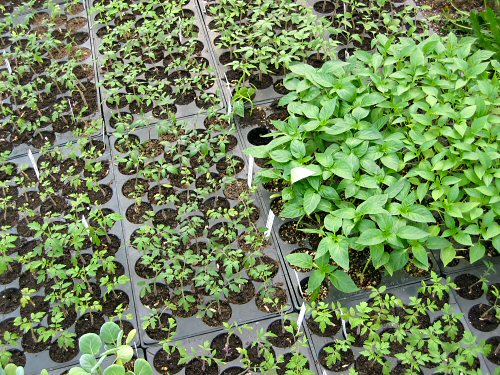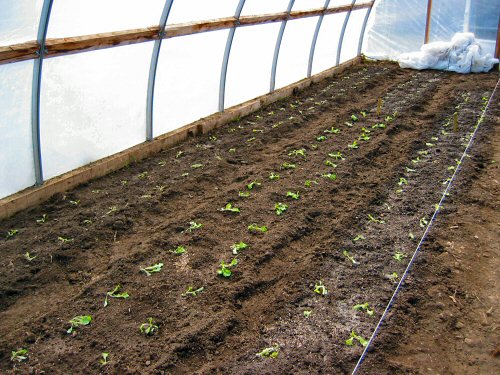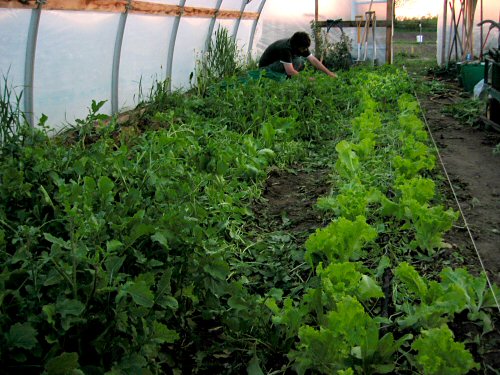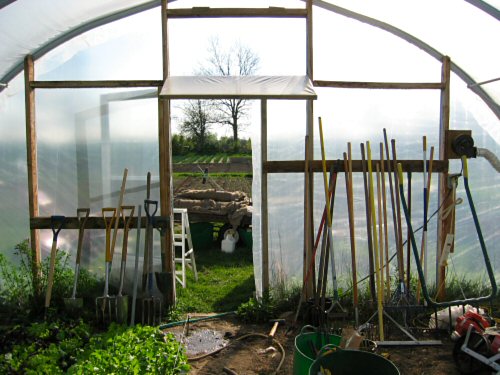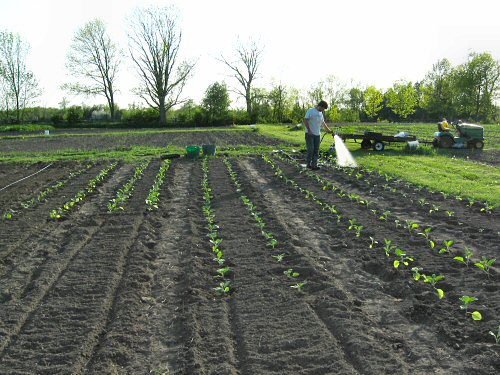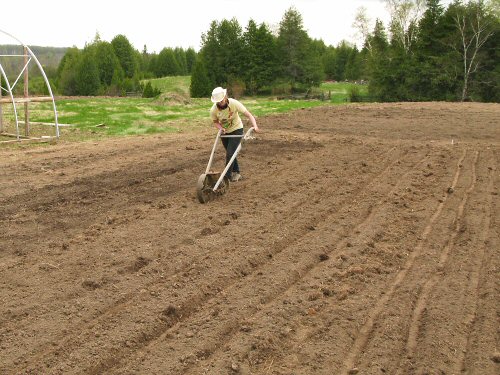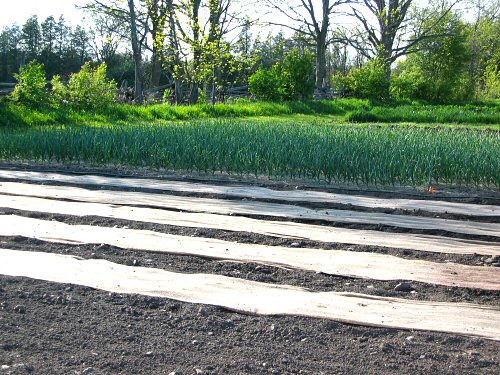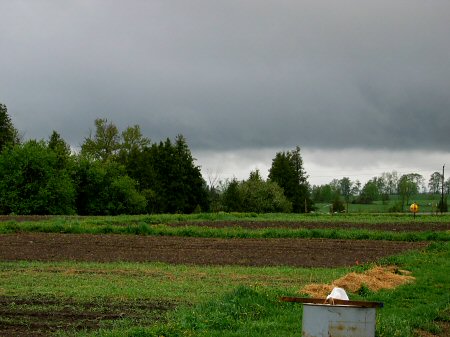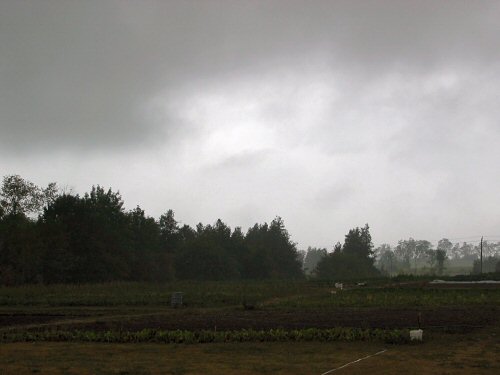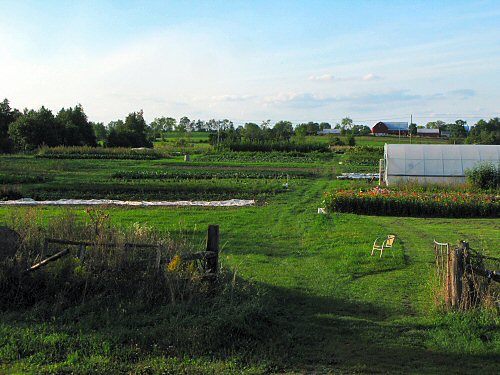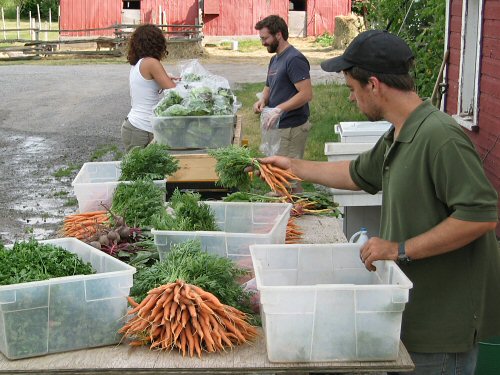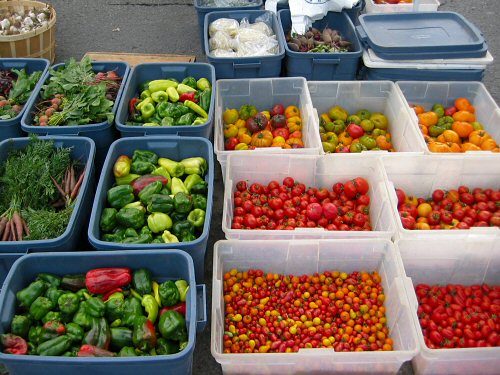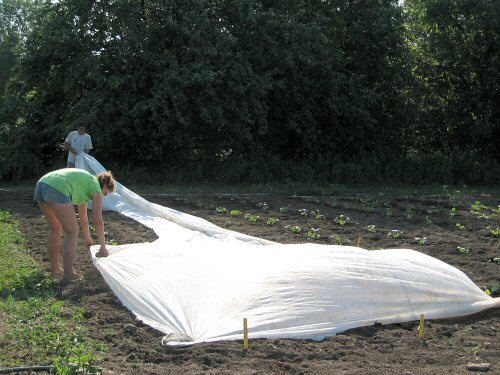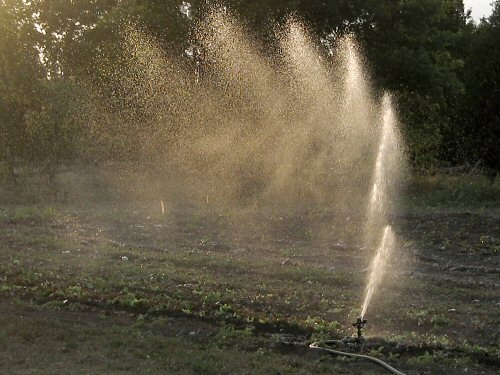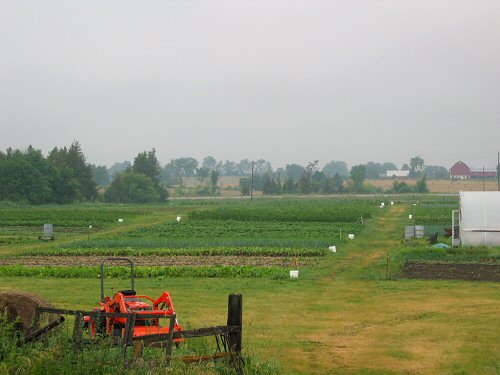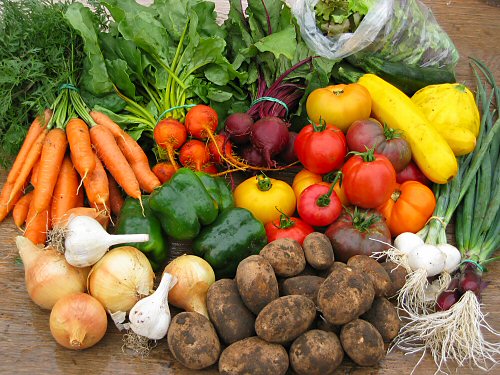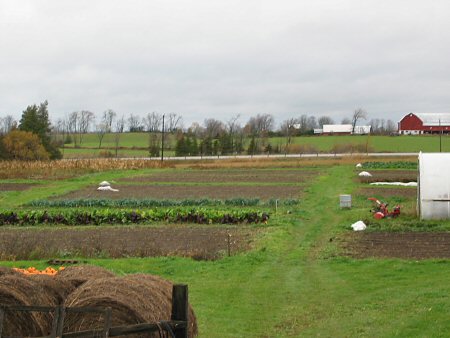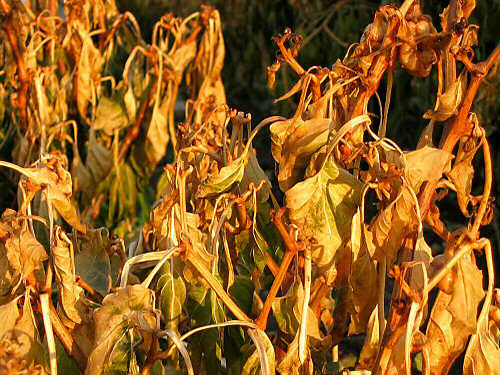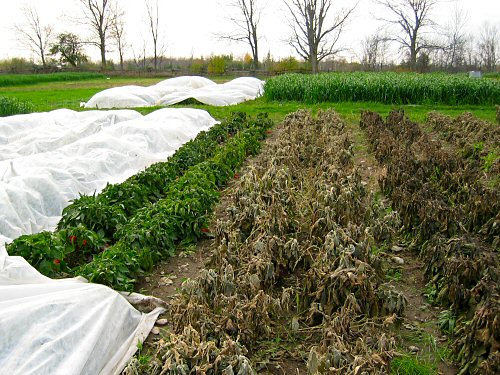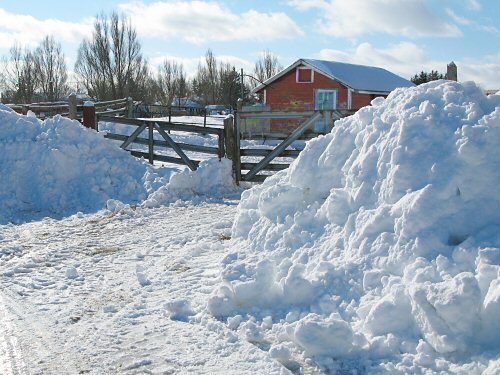Here is a DIY tiny farming crash course, in four parts, on one page. When you figure out how to do something, there’s a natural urge to pass on what you’ve learned. That’s the case here, with what I’ve gathered about small-scale farming. This is pretty much everything you need to know to start growing food!
Part 1: How to start from zero offers thoughts and tips on how to get started from scratch in your first farming year.
Part 2: Basic info covers soil, plants, weather, tools, and so on, even chickens.
Part 3: A simple daily system is a way to organize your farming day. With so many different things to do on a farm, it’s easy to get overloaded. Having a way to decide what to do next is a huge help.
Part 4: A quick farm tour is a virtual look around this farm with selected photos from over a thousand illustrated posts on this blog. You can see most everything that goes on.
Resources has a few helpful extra links.
There’s no particular order to follow. Start at the beginning and go through in order is what we’re usually taught to do. You can also browse here and there, let questions and ideas that pop into your head lead you. Whatever way you go about it will work out, as long as you keep at it!
Part 1: Starting from zero
Being an absolute beginner in small-scale farming, there is no shortage of ways to take it slow. There are tons of books, endless articles and videos online, farm internships, university degree programs—you can invest years in getting prepared. On the other hand, some of us jump right in with a minimum of preparation. This is the trial and error, learn from your mistakes, figure things out as you go approach. And if you’re planning to leap, the very first question is, how much do you have to know in order to get things rolling properly?
With tiny farming, it’s certainly possible to start from zero understanding of any sort of farming or gardening and have a market garden well underway within a few weeks. You’ll have to be a little intense about it, but it’s definitely doable. That’s how I started.
For me, the idea of market gardening happened around August of one year, and a one-acre garden was up and running the next spring. I was visiting on a largely unused farm at the time. An old tractor and experienced help were available, but except for a few cows, the fields were unused. To be sure, suitable land and experienced start-up help are critical ingredients. But all the planning—which crops to grow, how to plant seeds and where to buy them, what tools to get, what regulations applied, all on a tight budget, then, growing seedlings indoors, setting up the field, planting out, joining a local farmer’s market, harvesting, and actually bringing produce to market every week—was entirely up to me to figure out.
At first, it was three new questions for every one that I found an answer for. Grazing cattle and planting whole fields of a single crop is entirely different from market gardening, which means organizing 20 or 30 or more different vegetables in a relatively small area. I didn’t have anyone to ask about which tomato varieties or how much seed to buy, how many potatoes to plant, what tools and supplies I’d need for harvest. Figuring all of that out well enough to get started was done in three or four months. I even had the market garden certified organic for that first year.
It was intense, totally absorbing, with moments verging on panic, and overall absolutely fun! There was no time for doubt or second-guessing myself, I had to keep moving forward, getting answers, making decisions, and acting on them. Research started in September and crops were growing in the field in May. I went to my first farmer’s market first Saturday in August—for a little breathing room, I started the market mid-summer instead of in late spring. It really was deeply, quietly fantastic and satisfying to see information and planning in my head turn into an entire field of veggies. And without all of that planning and doing, the available land and support would have been unused potential, just lying around!
If this jump-right-in approach is what you’re considering, the following sections are meant to provide you with all you need to get started this minute. The next section is a list of web pages, each one covering the basics of an important aspect of small-scale farming. It’s not neatly structured like a textbook or a course in school, jumping in means answering your own questions as they pop up, allowing answers to lead to even questions, until a big picture and concrete to-do steps start to develop in your mind and on paper. The two sections after that are different types of overview, one about tiny farming discipline and mindset, and the other a photo tour of this particular market garden. Start anywhere. Move back and forth. Don’t try to memorize, imagine instead a jigsaw puzzle, as you take pieces out of the box one by one and place them on the table. Don’t freak out and get overwhelmed, just play with the pieces and have fun. That’s my best advice—hope it’s helpful! :)
Part 2: Basic info
These are links to pages on various web sites. Most contain their info on a single web page. Read them all and you’ll have a solid understanding of veggie farming basics. There’s also a bonus: pages on raising chickens for eggs and meat! Some pages seemed aimed at home veg gardens—don’t take that as a “not really farming” sign, it’s all the same small-scale farming info. Also, super-important, don’t just read, at the same time, watch videos, talk to veggie gardeners, go to farmer’s markets and chat with growers, make phone calls. Be bold with you questions: “I know nothing, I’m learning, can you answer me about this…” Make the pages below come alive!
- Equipment needs for veggie farms – Detailed equipment requirements for various sizes of veggie farm (absolutely accurate!).
- Get to know your soil – The basics of soil composition and how it affects plants. This is textbook-y, which in this case is good! Get the core terminology and concepts down in one shot!
- Fertilizing vegetables and Fertilizer basics – Lots to digest here, but it’s all on two pages and in handy bullet points!
- Seed germination basics – Essentials of seed and seedling biology and practice.
- Veggie planting chart – Basic veggie planting info: seed quantity, spacing, depth, yield, more…
- Vegetable growing guide – Individual single-page guides to growing 58 garden vegetables. (If you get a page warning, continue. It’s safe.)
- Crop rotation for vegetables – A practical summary (and how-to) of an ultimately complex and complicated subject.
- Plant disease basics – A light introduction to plant pathology.
- Insects & insect pest control basics – Practical entomology for gardeners, in a nutshell.
- Irrigation 101 – A solid intro to small farm irrigation basics.
- Rainfall calculator – How many gallons is one inch of rain on one acre of land? Questions like these, easily answered here.
- Seed storage times – Chart shows how long seeds last (estimates for some veggies vary quite a bit by source; when in doubt, do a germination test).
- Seeds per gram – Chart showing number of seeds by weight for (North American) garden veggies.
- Seed saving basics – A good intro to this big subject, with enough hands-on info to get started right away.
- Plant naming explained – Common names vs botanical names, and how plants are named.
- Weeds as soil indicators – Determine soil condition by seeing what plants are naturally growing on a piece of land.
- Edible flowers – General notes and an annotated list of ornamental, veggie and herb flowers that you can eat.
- Root cellar basics – A practical intro to root cellaring and long-term veggie storage.
- Sunrise and sunset (daylength) calendars – Sunrise/sunset and moon phase calendar for anywhere in the world.
- Weather averages – Monthly average and highest/lowest stats for temperature, precipitation, wind, etc, for any location, worldwide (for what it’s worth :).
- Moon planting guide – Planting according to the phases of the moon may be worth a try.
- Chicken eggs FAQ – Answers to the most likely egg questions.
- Raising chickens for meat – An intro to small-scale raising of meat birds, not a detailed how-to, but a good summary that accurately covers all the basics.
- Poultry butchering – A step-by-step, illustrated guide, with lots of alternatives and general information.
- Biodynamic agriculture explained – The best quick intro to biodynamic farming that I’ve found, all on one page.
- Marketing online – Save on time, money and distraction by sticking to the essentials for web sites and social media.
If you run into cool pages that you think belong here, or a better one than one of those listed, please let me know!
Part 3: A simple daily system
Growing food involves many different tasks and skills every day. Weather makes everything unpredictable. And there are always several things you could be doing at once. Getting disorganized and falling behind are…common. The more that happens, the more work you have to do to catch up. It can easily spiral (and it usually does…but don’t worry, put in your best effort and it will work out!).
A few years ago, after I’d been farming for a while, some words popped into my head, describing what I was doing that made things work reasonably well. Small-scale farming in a nutshell. The words were: Watch, Water, Weed, Don’t wait, Clean up. What to do every day, in that order of priority.
Since then, I’ve thought about them over several seasons, and they do seem to cover…everything. They’re in order of priority, first things first. Where should I start, what should I do next. It works to organize your day, and for longer periods as well.
Watch: Before doing anything else, take a look around. Walk through the field, observing. Literally. In a one- or two-acre veggie garden, the daily tour might average 15-30 minutes. Some days, more time will go by as you stop to check for specific things. For example, you may want to spot check the undersides of the leaves on some of your potato plants, looking for Colorado potato beetle eggs, to get them early. This won’t be every day. As you gain experience, you’ll adjust and streamline your garden tour. Just do it every day! It is exactly the opposite of a waste of time. You’ll catch things early, which will save vast amounts of time and energy if acted on right away. As the old saying goes: “A stitch in time saves nine.”
Water: If anything needs to be watered, do that first. Again, experience will make more sense of this. And there are different conditions to take into account. If you’ve set up drip tape for the season, watering may be as simple as opening a tap. If you’re dragging around hoses, the same watering is a much more time-consuming, labor-intensive job. You’re looking for the obvious watering needs. For example, if string beans are just starting to flower, or if the carrot seeding is starting to dry out even though it’s under cover, these are critical moments where timely watering will make a HUGE difference.
Weed: The next priority is weeding. Don’t delay, weed today. The same ideas in Water apply here. With experience, you’ll get to know your weeds, how they grow under different weather conditions. It’s the easiest decision to put off weeding when the weed plants are tiny specks, but that’s the time to do it! A half hour or hour of easy scuffling or wheel hoeing can (and will) become hours of hand weeding in as little as a few days or a week or two. It’s stunning how fast weeding time multiplies as the little guys settle in and get down to growing. Remember that your main weeds are the plants you don’t want that are the most perfectly adapted and resilient precisely for your field—they grow fast for a reason!
Don’t wait: Among all the things to do, you’ll notice yourself putting some of them off. Don’t. This is built in to the previous three…rules. You don’t want to wait on any of them. It also applies to the many other projects and tasks: building, repairing, calling, filling out, looking up, the list goes on. You’ll often know what is the next thing you’d like to have done, but something makes you want to put it off. Maybe you’re not clear on the how-to, or you think it’s important but aren’t sure. This is where you don’t want to wait, just get on with it. If there are two stubbornly competing priorities, don’t reason it out, flip a coin! If in the end it doesn’t get finished, fine. Just don’t put things off all in your mind.
Clean up: A place for everything, and everything in its place. Put things back after you use them. The critical thing here is to actually have a place for every last thing. It could be as simple as banging a nail into a doorframe and hanging your tractor key on it. That’s the place for that key. It’s mostly about always knowing where to find things when you need them, not about appearances and keeping things looking nice and neat.
Trying this out will start as a bunch of conscious steps: “Now I’m watching. Now I’m watering.” If you stick with it—try a solid month—you’ll notice that the labels fade away as the practical value demonstrates itself to you. At some point, you’ll feel you’re missing an important ingredient if you don’t survey at the start of the day, or if you put off watering seedlings that look like they need it. However you adapt to growing things, to succeed while having fun means making practical actions into habits. The five steps—Watch, Water, Weed, Don’t Wait, Clean up—are a way to help that happen.
Part 4: A farm tour
If you’d like to take a look around a tiny farm, you can browse the posts on this blog by subject, to see how one person (me!) has gone about it. Get an idea of planning, building & fixing, seed starting, harvest, and other topics. I wouldn’t call them Best Practices, but I can say from experience that they got the job done. You need to start somewhere!
This slideshow provides the highlights of one full farm year here. Use mouse or swipe to move around.
Resources (bonus!)
Links to companies that make tools and other tiny farming necessities. Only a couple to start with…
Also…
